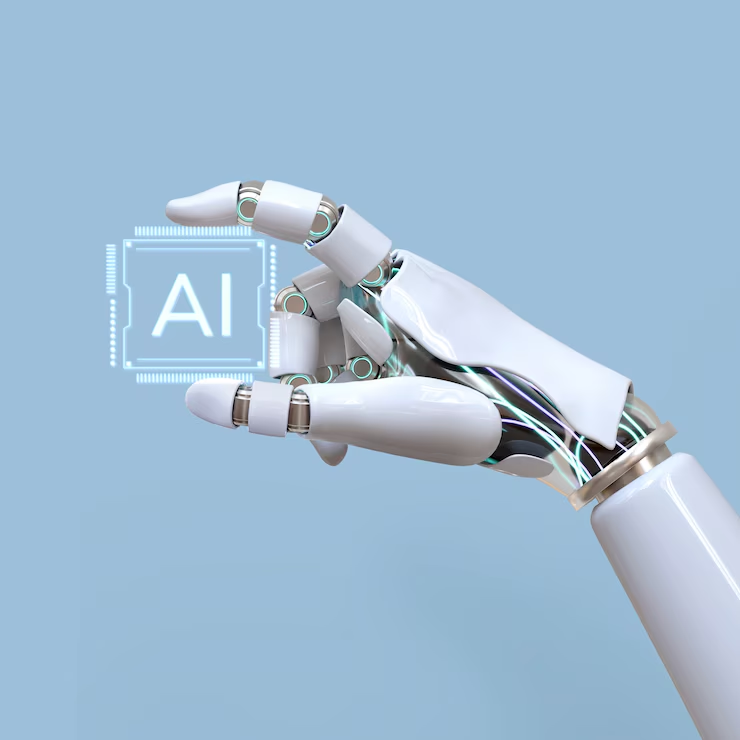Artificial Intelligence (AI) is transforming how businesses design and enhance user experiences (UX). By leveraging AI, companies can create personalized, efficient, and seamless interactions for users across digital platforms. From chatbots and recommendation engines to predictive analytics and voice recognition, AI-driven UX strategies can significantly improve customer satisfaction and engagement.
In this blog, we will explore how AI enhances UX, the tools available, and best practices to integrate AI effectively.
1. Understanding AI in UX
What is AI in UX?
AI in UX refers to the use of machine learning, natural language processing (NLP), computer vision, and automation to enhance how users interact with digital products. AI-driven UX adapts to user behavior, making interfaces more intuitive and personalized.
Why is AI Important for UX?
- Personalization: AI helps create tailored experiences based on user data.
- Efficiency: AI-driven automation reduces friction in user interactions.
- Predictive Capabilities: AI anticipates user needs and optimizes engagement.
- Accessibility: AI-powered tools, like voice assistants, improve accessibility for all users.
2. AI-Driven Personalization in UX
Personalization is one of the most effective ways AI enhances UX. AI analyzes user behavior, preferences, and history to deliver a more customized experience.
Examples of AI-Driven Personalization
- Netflix & Spotify: AI-driven recommendation engines suggest movies, shows, and music based on viewing and listening history.
- E-commerce Platforms (Amazon, Shopify): AI tailors product recommendations based on browsing behavior.
- News Websites (Google News, Apple News): AI curates news based on a user’s reading habits.
How to Implement AI Personalization in UX
- Use machine learning algorithms to analyze customer data.
- Implement behavioral tracking to understand user preferences.
- Use dynamic content personalization (such as tailored product suggestions).
3. AI Chatbots & Virtual Assistants for Better UX
AI-powered chatbots and virtual assistants improve customer interactions by providing instant support.
Benefits of AI Chatbots in UX
- 24/7 availability: Users receive support anytime.
- Instant responses: Reduces wait time for customer queries.
- Scalability: Handles multiple users at once.
Examples of AI Chatbots in UX
- ChatGPT & Bard: AI-powered conversational models that provide detailed responses.
- E-commerce Chatbots (e.g., Sephora, H&M): AI chatbots assist in product recommendations and purchases.
- Banking Assistants (e.g., Erica by Bank of America): AI-powered banking assistants help customers with transactions and account queries.
How to Implement AI Chatbots for UX
- Use natural language processing (NLP) for better human-like conversations.
- Train chatbots with customer query datasets to enhance accuracy.
- Ensure chatbots can seamlessly escalate to human agents when necessary.
4. AI in Voice & Speech Recognition for UX
Voice assistants like Siri, Alexa, and Google Assistant have changed how users interact with devices. Voice search is becoming a key part of UX design.
How Voice AI Enhances UX
- Hands-free navigation improves accessibility.
- Faster information retrieval improves user experience.
- Natural language understanding (NLU) allows for intuitive interactions.
How to Implement Voice AI for UX
- Optimize digital platforms for voice search compatibility.
- Use speech recognition AI for seamless communication.
- Implement multilingual support for global users.
5. AI-Powered UX Design & Prototyping
AI is also revolutionizing how designers create and test user interfaces (UI). AI-powered design tools help generate UI elements, analyze designs, and automate repetitive tasks.
AI Tools for UX/UI Design
- Adobe Sensei: Uses AI to suggest design elements.
- Figma AI: Helps in automated design prototyping.
- Uizard: AI-driven tool for creating wireframes and mockups.
How AI Helps in UX Design
- Automates repetitive tasks like resizing and color corrections.
- Predicts design improvements based on user behavior.
- Generates heatmaps to analyze user interactions on a website or app.
6. AI in Predictive Analytics for UX
Predictive analytics uses AI to analyze user data and predict future behaviors. This helps companies optimize their UX strategies by anticipating user needs.
How Predictive Analytics Improves UX
- Identifies potential drop-off points in user journeys.
- Enhances customer retention by providing personalized content.
- Optimizes website navigation based on past interactions.
Examples of AI Predictive Analytics in UX
- Amazon’s Purchase Prediction: AI predicts what users will buy next.
- Netflix’s Viewing Prediction: AI suggests content based on watch history.
- Google Search Suggestions: AI predicts what users want to search.
How to Implement AI Predictive Analytics
- Collect and analyze user interaction data.
- Use AI-driven heatmaps to identify weak areas in UX.
- Continuously test and optimize user pathways.
7. AI in Sentiment Analysis for UX Improvement
AI-powered sentiment analysis tools help businesses understand customer emotions through feedback, reviews, and social media mentions.
How Sentiment Analysis Helps UX
- Identifies frustrations and pain points in the user journey.
- Provides real-time customer feedback for improvements.
- Helps businesses understand customer expectations.
Tools for AI Sentiment Analysis
- MonkeyLearn (Text analysis AI)
- Brandwatch (Social media sentiment tracking)
- IBM Watson AI (Customer sentiment insights)
How to Implement Sentiment Analysis in UX
- Monitor user reviews and feedback for common issues.
- Use AI to detect emotional tones in customer support interactions.
- Adjust UX design based on AI-driven feedback analysis.
8. AI in Image & Video Recognition for UX
AI-powered image and video recognition enhance user experiences in areas like e-commerce, social media, and accessibility.
Examples of AI Image & Video Recognition
- Google Lens: Identifies objects in images and provides relevant information.
- Pinterest Lens: Allows users to search for similar products using images.
- Facebook & Instagram AI: Uses image recognition for content recommendations.
How to Implement AI Image Recognition for UX
- Integrate AI-powered visual search capabilities in apps and websites.
- Use AI to auto-tag and categorize images for better navigation.
- Improve accessibility features for visually impaired users.
9. AI-Powered Accessibility Features in UX
AI significantly improves digital accessibility, ensuring that users with disabilities can navigate websites and apps more easily.
AI-Powered Accessibility Tools
- Voice-to-text AI: Helps users convert speech into text (Google Voice Typing, Otter.ai).
- AI-generated captions: YouTube and Zoom use AI for automatic closed captions.
- Screen readers: AI-powered tools like JAWS assist visually impaired users.
How to Implement AI Accessibility Features
- Use automatic alt-text generation for images.
- Optimize voice-controlled navigation.
- Implement real-time translation tools for multilingual accessibility.
10. Best Practices for Implementing AI in UX
Do’s
✅ Use AI to enhance, not replace human interaction.
✅ Continuously test and optimize AI-driven UX elements.
✅ Ensure AI algorithms respect user privacy and data security.
Don’ts
❌ Avoid over-reliance on AI at the cost of human-centered design.
❌ Don’t ignore user feedback when implementing AI-powered UX changes.
❌ Avoid AI bias—ensure fair and ethical AI use.
Conclusion
AI is revolutionizing UX by making digital experiences more personalized, efficient, and accessible. Businesses that embrace AI-driven UX strategies can improve user satisfaction, engagement, and retention. By integrating AI-powered chatbots, voice recognition, predictive analytics, and accessibility features, companies can create seamless and intelligent user experiences.
Would you like help choosing the right AI tools for your business? Let’s discuss in the comments! 🚀


